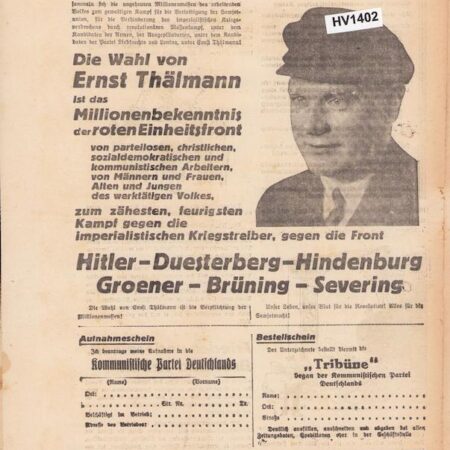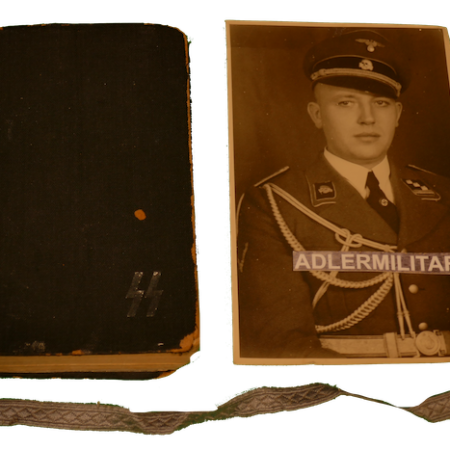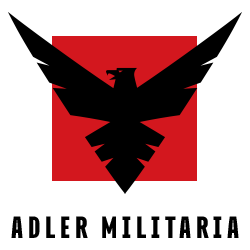Showing all 6 resultsSorted by latest
-

Original KPD 1932 Elections Propaganda – Ernst Thälmann – Red United Front – 4 Pages – Very Rare
$175.00German communist propaganda leaflet/newspaper from the early 1930s (Weimar Republic period, pre-Nazi takeover). It appears to have been printed by or for the KPD (Kommunistische Partei Deutschlands – Communist Party of Germany), and it is aimed at mobilizing workers against the rise of fascism (Hitler, Hindenburg, etc.) and against imperialist war preparations. Page 1 – Large headline: “Krieg” (War). References to 26 February edition of “BZ am Mittag”, describing Japanese militarism in China and imperialist wars. Sections: “Der Krieg ist da!” (The war is here!) “Jetzt höchster Alarm” (Now highest alert) – warning workers about war danger. “Die Sowjetunion ist die einzige Macht, die aktiv für den Frieden eintritt” (The Soviet Union is the only power that actively stands for peace). A photograph of a man (likely a Soviet or German communist leader). Page 2 Headline: “In der roten Einheitsfront” (In the Red United Front). Big slogan: “Die Wahl von Ernst Thälmann ist das Millionenbekenntnis der roten Einheitsfront” (The election of Ernst Thälmann is the declaration of millions for the Red United Front). Thälmann was the leader of the KPD and ran against Hitler and Hindenburg. Calls for unity of workers (Communists, Social Democrats, Christian workers, etc.) against Hitler, Duesterberg, Hindenburg, Groener, Brüning, Severing (political opponents). Bottom has: Membership application form for the Communist Party. Subscription form for the party newspaper “Tribüne”. Portrait of Ernst Thälmann with a cap. Page 3 Denounces the “Hitler–Duesterberg–Hindenburg front.” Calls to action: “Proletarier, Augen auf!” (Proletarians, open your eyes!) “Die Kommunistische Partei ruft” (The Communist Party calls). Cartoon caricatures of Hitler, Hindenburg, and another conservative politician (likely Groener). Slogan: “Noch ist es Zeit, den Kriegstreibern in den Arm zu fallen!” (There is still time to stop the warmongers!). Page 4 Headline: “Sturm im Land” (Storm in the country). Strong calls for workers’ unity against imperialist war and for defense of the Soviet Union. Specific calls to: Metalworkers, chemical workers, railway workers, seamen, dock workers, transport workers, chauffeurs. Cartoon of capitalist/bourgeois men sitting at a table drinking and eating while workers suffer. Another drawing shows dockworkers handling heavy machinery and war materials (criticizing war profiteering). Final slogans: “Frieden und Freiheit, Brot und Arbeit” (Peace and Freedom, Bread and Work). Demands for fighting capitalism, militarism, and for solidarity with the Soviet Union and revolutionary workers in China. Final Comments Communist propaganda from the KPD, around the 1932 German elections, when Ernst Thälmann ran for president against Hitler and Hindenburg. It appeals to workers to unite under the Communist Party to fight against war, militarism, and capitalism. It glorifies the Soviet Union as the only force for peace. It denounces Hitler, Hindenburg, and other right-wing/centrist leaders as “warmongers” serving big capital.
-
Sale!

WWII German Berlin Verkehrs Betriebe BVG Ausweis – U-Bahn – January 1945 –
$85.00Original price was: $85.00.$45.00Current price is: $45.00.WWII German Berlin Berkehrs Betriebe BVG Ausweis – U-Bahn – January 1945 – Issued by the Commander of Berlin (See stamp) Rare
-

WWII Waffen-SS Grouping – SS-Obersturmfuhrer Georg Kinzler (DKiG) – Totenkopf Division 1942 SS Pocket Diary – One of Kind – Very Rare (Offer / Reserved)
SS Obersturmfuhrer Georg Kinzler (DKiG) This incredible SS Diary details the Demyansk Pocket 1942, transcribed into 53 Pages into English with Annotations. It is completed with a USB Drive with the 53 Pages. All Inside a Ring Binder. Extra Research Demyansk Pocket The Demyansk Pocket was the name given to the pocket of German troops encircled by the Red Army around Demyansk, south of Leningrad, during World War II’s Eastern Front. The pocket existed mainly from 8 February to 21 April 1942. A much smaller force was surrounded in the Kholm Pocket at the town of Kholm, about 100 km (62 mi) to the southwest. Both resulted from the German retreat after its defeat during the Battle of Moscow. The successful defence of Demyansk was achieved by using an airbridge and was a significant development in modern warfare. Its success was a major contributor to the decision by the Army High Command to try the same tactic during the Battle of Stalingrad, but it then failed to save the Sixth Army, commanded by Friedrich Paulus. In April 1941, the Totenkopf Division was ordered East to join Field Marshal Wilhelm von Leeb’s Army Group North. Leeb’s force was tasked with advancing on Leningrad and formed the northern wing of Operation Barbarossa. Totenkopf took part in the advance through Lithuania and Latvia, and by July had breached the Stalin Line. The division then advanced past Demyansk to Leningrad where it was involved in heavy fighting in August. During Soviet winter counter-offensive, the division was encircled for several months near Demyansk in what became known as the Demyansk Pocket. During the fighting in the pocket, it was re-designated “Kampfgruppe Eicke” due to its reduced size. In April 1942, the division broke out of the pocket. At Demyansk, about 80% of its men were killed, wounded or missing in action. The division was sent to France to be refitted in late October 1942. Comments This diary is a historical insight into the war year of 1942 with the Totenkopf Division, including in the Demjansk Pocket in 1942. Kinzler seemed to be very calculated, many original notes of orders numbers etc Battle of Kursk Kinzler is mentioned in the Battle of Kursk literature, LAST VICTORY IN RUSSIA , The SS-Panzerkorps and Manstein’s Kharkov Counteroffensive February-March 1943, George M. Nipe, Jr, Schiffer Military History Atglen, PA, Page 172 There were a number of forward defensive positions controlling the approaches to the village from the west and they held up the battalion until nightfall. After eliminating these defenders and driving the main body of Russians out of the town, Schubach rested and reorganized his battalion, planning to resume his attack at 0100 hours. 26 Meanwhile, SS-Hauptsturmführer Wilhelm Schulze’s II./Regiment “Totenkopf’ had begun its advance toward Pavlograd after the departure of Schubach’s battalion from Pereshschepino, taking a different road out of the town. Schulze’s objective was to assemble in the area to the north of Pavlograd, in preparation for attacking the town from the northwest. The battalion was reinforced by motorcycle troops, an artillery battery and the division’s Panzer-Pioniere Kompanie, led by SS-Obersturmführer Georg Kinzler. The long column, moving over narrow, icy roads, advanced slowly to the southeast of Pereshschepino, although its passage through the darkness was unimpeded, until just after midnight. At that point it ran into a detachment of Soviet cavalry troops, at the village of Popassnoje, fifteen km northwest of Pavlograd. The column deployed for battle and assaulted the village, supported by fire from a battery of 10cm howitzers. By daylight Popassnoje was in German hands and the Soviet cavalrymen had been put to flight, but the battalion was delayed and could not support “Das Reich’s” attack on Pavlograd. When the advance resumed Russian cavalry, numbering about 150-200 men, appeared on the flank of the march route, forcing Schulze to deal with them. A Kampfgruppe of the SS Panzer Pioniere-Kompanie, two assault guns, an SPW and the howitzer battery, set off in pursuit. The commander of the battery, SS Hauptsturmführer Friedrich Messerle, remembered the chase as a ‘crazy hunt out of the wild west.” Following the tracks of the Russian horses, the Germans made their way to a Soviet town, which was typically spread out along the road which ran through its center. By this time, nightfall was approaching and the Germans did not want to risk entering the village and stumbling into an ambush in the dark. The small Kampfgruppe circled its vehicles like wagon train threatened by Indians and positioned its howitzers along the perimeter, ready to go into action at a seconds notice. Just before the dawn, the SS Pioniere cautiously entered the village, feeling their way down both sides of the main street. This flushed out the Soviet cavalry, which suddenly took off across the snow, galloping hard for a hill behind the village. Messerle’s howitzers fired into their midst, but within seconds the Russians reached the edge of the hill, after suffering only a few casualties. By 1945, Kinzler was on the staff of the SS Pioneer School. SS-Pionierschule command structure was the following one. March 1945, the school staff was formed with the following officers : Kdr. : SS-Obf. Klein Adjutant : SS-Ostuf. Nägele Ia : SS-Ostubaf. Deschner (then SS-Hstuf. Kinzler in April) Ib : SS-Staf. Hermann IVa : SS-Hstuf. Förster IVd : SS-Ostuf. Hohl V Pi. : SS-Hstuf. Otto-Karl Witt TFK : SS-Hstuf. Paduch 01 : SS-Ostuf. Stelzenmüller Stamm-Kp. : SS-Hstuf. Schwarz SS-Pionier-Sperr-Bataillon “Brosow” April 1945 – defended bridges while the school was being evacuated and its remaining personnel withdrawn. Kinzler was awarded the German Cross in Gold as per, Mark C Yergers book in 1945. We have chosen not to share the complete content of Georg Kinzler. Due to the fact that many details of the battle have not yet been published. This is a prime, first hand item for any serious Military Archive or Museum or an advanced Private Archive.
-

WWII Original Pilots Trench Art US Army Air Corps 8th Air Force 55th GP – Lockheed P-38 Lightning – Made from 50cal Ammo by Sgt Royal McShea Jr – Normandy & Ardennes 1944/1945 – Rare
$1,350.00An incredible piece of Trench Art, this was made by the Royal McShea Jr who served with the 55th Fighter Group US AAF. Constituted as 55th Pursuit Group (Interceptor) on 20 Nov 1940. Activated on 15 Jan 1941. Trained with P-43’s. Redesignated 55th Fighter Group in May 1942. Converted to P-38’s and prepared for combat. Moved to England, Aug-Sep 1943. Assigned to Eighth AF. Began operations with P-38’s on 15 Oct 1943; converted to P-51’s in Jul 1944. Engaged primarily in escorting bombers that attacked such targets as industries and marshalling yards in Germany, and airfields and V-weapon sites in France. Provided cover for B-17’s and B-24’s that bombed aircraft plants during Big Week in Feb 1944, gun emplacements during the St Lo breakthrough in Jul 1944, and transportation facilities during the Battle of the Bulge, Dec 1944-Jan 1945. Also patrolled the air over the Channel and bombed bridges in the Tours area during the invasion of the Continent in Jun 1944; patrolled the Arnhem sector to support the airborne invasion of Holland in Sep 1944; strafed trucks, locomotives, and oil depots near Wesel when the Allies crossed the Rhine in Mar 1945. Received a DUC for eight missions to Germany between 3 and 13 Sep 1944 when the group not only destroyed enemy fighters in the air to protect the bombers it was escorting, but also descended to low levels, in spite of intense antiaircraft fire, to strafe airdromes and to destroy enemy aircraft on the ground. Received second DUC for operations on 19 Feb 1945 when the organization flew a sweep over Germany to hit railway tracks, locomotives, oil cars, goods wagons, troop cars, buildings, and military vehicles. Flew last combat mission on 21 Apr 1945. Moved to Germany in Jul 1945 as part of the occupation forces. Assigned to United States Air Forces in Europe. Trained with P-51 and P-80 aircraft. Inactivated in Germany on 20 Aug 1946. Sgt Royal McShea made this amazing statue with original decommissioned 50 Cal Ammo. He was part of the ground crew of the 343rd for 2nd Lt. James C. McVey US SALES ONLY – Or contact us with regards to postage.
-

WWII American Propaganda – For German Soldiers – Hürtgenwald 1944 – 12 Volksgrenadier Div / 47 Volksgrenadier Div – Rare
$65.00An interesting flyer, basically stating all is lost, describing both fronts and there is a chance to survive if you surrender.
-

WWII Red Army Soviet Propaganda – For German Soldier – Pass to POW – Bank Note – 23.04.1945 – Rare – Berlin 1945
$39.50A very late pass to surrender to the Red Army, made in the form of a bank note to capture attention. Very late war (23.04.1945) perhaps used during the battle for Berlin 1945.




